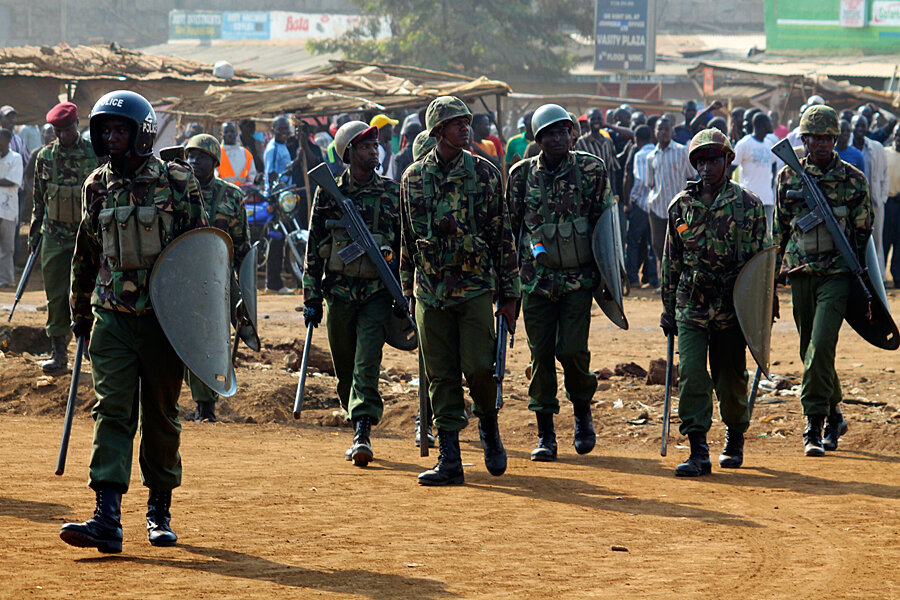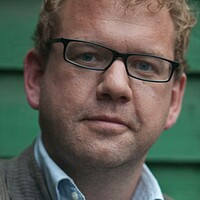Behind deadly force in Kenya, there's often a police badge
Loading...
| Nairobi, Kenya
Kenyans are five times more likely to be shot dead by police than by armed robbers, according to a new survey that highlights problems in what is often perceived as one of the world’s most corrupt law-and-order forces.
A five-year study found that 67 percent of people who died from gunshot wounds in six major urban areas between 2009 and 2013 were shot by a police officer, compared with 14 percent who died at the hand of armed thugs.
The US, Britain, and Sweden are leading international efforts to help Kenya's police force change from one that is best known for fleecing citizens and for taking bribes in exchange for turning a blind eye, into one that serves and protects.
Similar work is being done across Africa and the developing world, where state security, including local cops, is often more feared than trusted. In Kenya today it is widely understood that a police officer is practically the last person a Kenyan in trouble will call for help.
This latest survey, released June 26 by the Independent Medico-Legal Unit, a respected nongovernment organization that campaigns against Kenyan police misconduct, suggests that so far there has been little progress in any number of much-vaunted reforms.
Of the 1,873 Kenyans shot dead during the survey period in the country’s major cities and towns, 1,252 or 67 percent were killed by a police officer. That basic proportion did not fluctuate over the five-year period of the study.
In 63 percent of those cases, police failed to report details of the circumstances of the shooting. No reason was given as to why the officer opened fire in 68 percent of cases. Forensics reporting was poor, hamstringing investigations.
The study comes amid what has been a severe crackdown by Nairobi police in one of the city's most dynamic commercial neighborhoods, known as Eastleigh or "Little Mogadishu." [See Monitor in-depth story.] As a largely ethnic Somali neighborhood, Eastleigh got caught in a government led "war on terror" as police and security sought to rout out traces of the Somali radical group Al Shabab.
Between April and late May, police raided Eastleigh homes, in daily campaigns of roundups, indiscriminate arrests, beatings, extortion, and forced deportations caused many Somalis to vote with their feet, empty their bank accounts, and leave.
The new police study also highlights the practice of police “gun for hire” schemes where cops rented their firearms to criminals. Many officers colluded with known gangs.
“Kenyans’ hopes for a new police service have been bogged down by the dearth of political will to refocus policing away from safeguarding the ruling class and towards public safety and security,” said Peter Kiama, IMLU’s executive director.
Slow pace of change
US aid money of more than $5.5 million annually is being spent on police reform in Kenya, although officials at the State Department were unable to provide exact figures.
Sources with knowledge of US programs in this sector said there was an acceptance that such organizational change takes time, but frustrations were growing at the slow pace of progress.
David Kimaiyo, Kenya’s top policeman, has resisted repeated calls for his resignation over a series of recent police debacles, including failures during the Al Shabab terror siege of Nairobi’s Westgate mall.
Further terror attacks have followed, and violent crime has risen 22 percent in the past 12 months, according to a British private security firm working in Kenya, G4S.
Some 92 percent of respondents to a 2013 Transparency International study voted Kenya’s police the country’s most corrupt institution.
Police spokeswoman Zipporah Mboroki disputed the IMLU statistics but could not immediately provide figures of her own.
“The sample used in this study, using urban areas only, is unrepresentative and cannot reasonably be extrapolated to cover the whole country,” one government source told the Monitor.
Police reforms have not failed, the source added, because 27 cases are being investigated by an independent police oversight group, part of a new reform effort.






